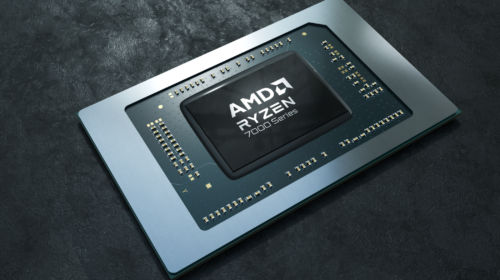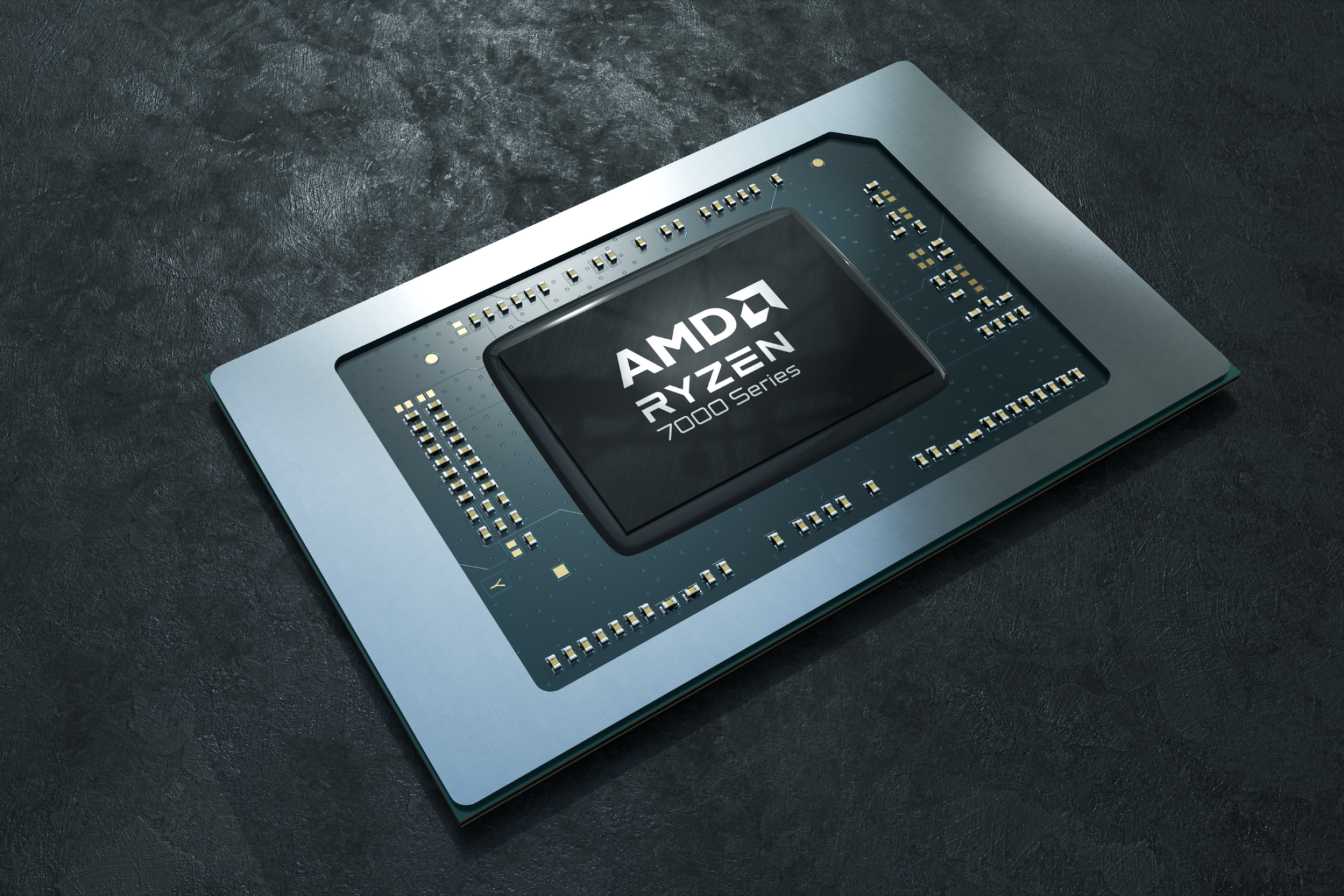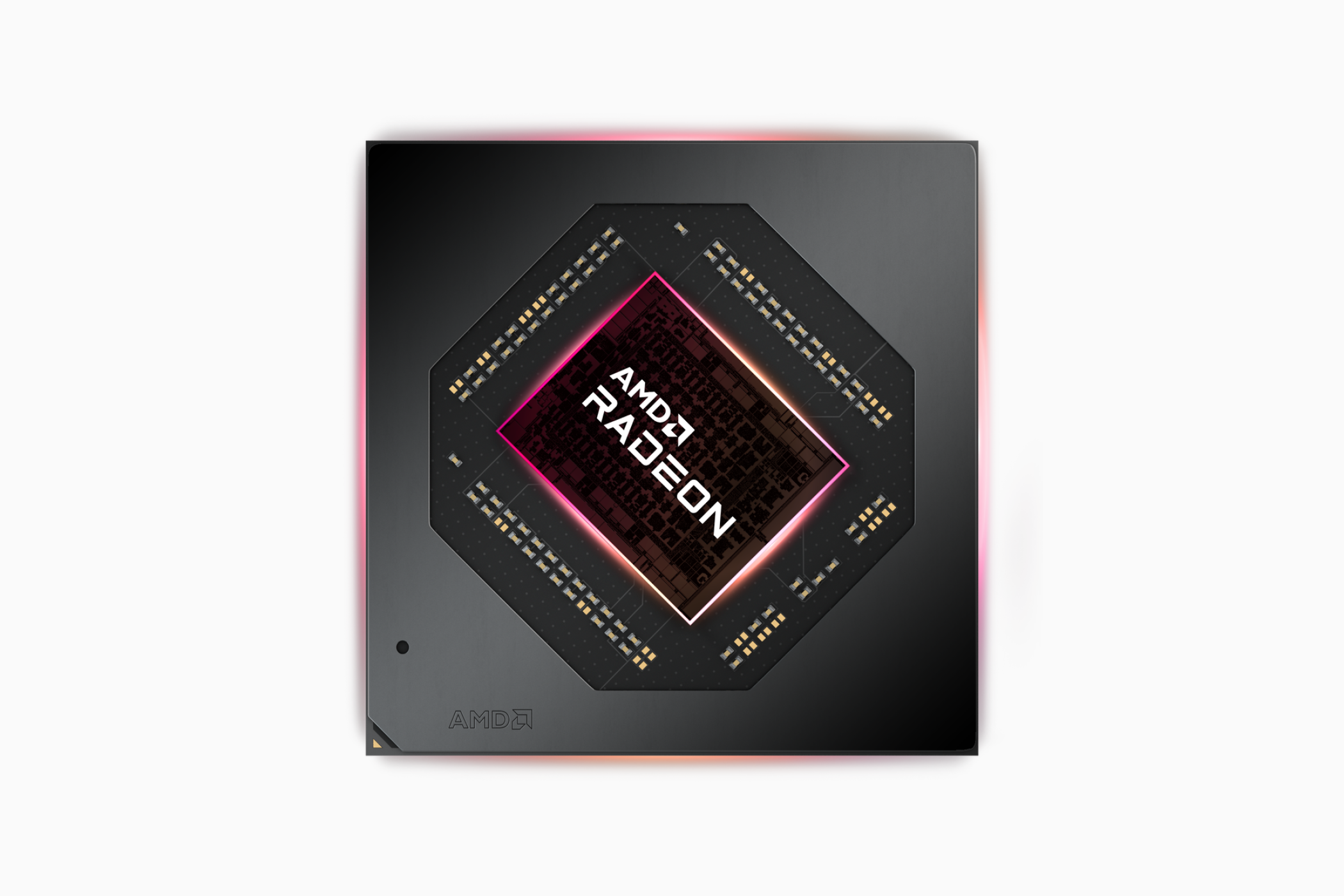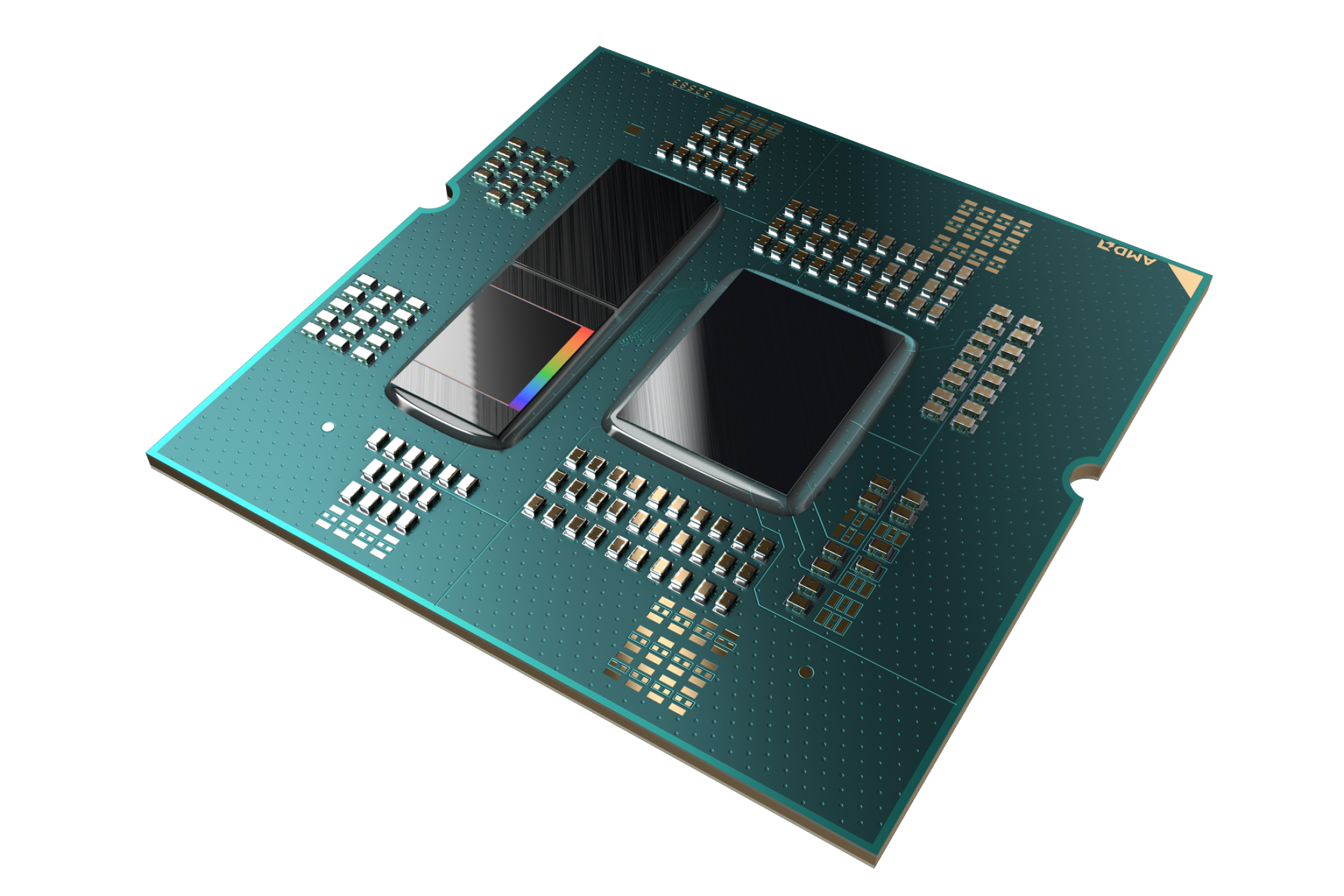2022, while not a great year for AMD, saw the release of Ryzen 7000 CPUs and RX 7000 GPUs, laying the foundation for AMD’s next generation of chips. AMD builds on its product portfolio with the announcement of the Ryzen 7000 mobile, RX 7000 mobile, desktop Ryzen 7000 V-Cache CPUs, and budget-oriented Ryzen 7000 processors at CES 2023. It’s a solid way for AMD to start the year and to adapt to the issues it faced in 2022. , and we’ll see all of these new products launched almost immediately in February.
Ryzen 7000 is finally coming to laptops
AMD has always made it clear that the Ryzen 7000 mobile will debut in the first quarter of 2023, so it’s no surprise that we finally got the (mostly) full announcement at CES. Ryzen 7000 mobile, apart from introducing new APUs using the Zen 4 architecture, also introduces a realignment of AMD’s mobile processors. What you need to know is that Ryzen 7000 mobile does not mean Zen 4; There are Zen 2, Zen 3, and Zen 3+ Ryzen APUs in the Ryzen 7000 lineup, indicated by the second-to-last number in the CPU name (7020 series is Zen 2, 7030 is Zen 3, and so on).
For the really new Ryzen 7000 mobile APUs that use Zen 4 architecture, AMD is doing something interesting. All previous generations of Ryzen mobile have used essentially the same chip for chip, but the Ryzen 7000 offers two separate CPUs for different segments: the 7040 series for laptops that focus on efficiency and size, and the 7045 series for laptops that focus on raw performance.
Codenamed Phoenix, the 7040 U and HS series are very much in line with previous generations of Ryzen 7000 mobile: fewer cores than desktop CPUs (up to eight in this case) and limited TDP to 45W. One notable update is the cache amount, which is finally on par with desktop CPUs. These Phoenix APUs are also the first AMD chips to incorporate AI technology (a feature of the company’s acquisition of Xilinx). AMD claims its new AI engine is up to 20% faster than the one in Apple’s M2 CPU, but we’ll have to see for ourselves. AMD has announced three Ryzen 7040 models, all HS-class, with U versions to be released at a later date.
|
Ryzen 9 7940HS |
Ryzen 7 7840HS |
Ryzen 5 7640HS |
|
|
cores/threads |
8/16 |
8/16 |
6/12 |
|
Boost/basic frequency |
5.2 / 4.0 GHz |
5.1 / 3.8 GHz |
5.0 / 4.3 GHz |
|
Cache (L2 + L3) |
40 MB |
40 MB |
38 MB |
|
TDP |
35-45 watts |
35-45 watts |
35-45 watts |
The high-end 7045 HX series, codenamed Dragon Range, is actually just Ryzen 7000 desktop CPUs but modified for laptops. This means that Ryzen’s fastest mobile APUs now come with desktop levels of cores, cache, and clock speeds. Of course, since power is limited on mobile devices, the high-end Ryzen 9 7945HX will be slower than the Ryzen 9 7950X despite the fact that they are almost the same chip. AMD Releases 7045 Series APUs:
|
Ryzen 9 7945HX |
Ryzen 9 7845HX |
Ryzen 7 7745HX |
Ryzen 5 7645HX |
|
|
cores/threads |
16/32 |
12/24 |
8/16 |
6/12 |
|
Boost/basic frequency |
5.4 / 2.5 GHz |
5.2 / 3.0 GHz |
5.1 / 3.6 GHz |
5.0 / 4.0 GHz |
|
Cache (L2 + L3) |
80 MB |
76 MB |
40 MB |
38 MB |
|
TDP |
55-75 W+ |
45-75 W+ |
45-75 W+ |
45-75 W+ |
Using both traditional laptop silicon and high-end desktop silicon for the Ryzen 7000, AMD is basically doing what Intel started with its 12th Gen Alder Lake CPUs. Intel has mobile-oriented P series processors as well as H/HX CPUs that are basically identical to their desktop chips. AMD has long struggled to beat Intel in raw performance, but with Dragon Range AMD finally has Intel on the line. Using Zen 4 chips exclusively for high-end laptops is also an indication that AMD continues to focus on the high-end segment of the market.
Meanwhile, Zen 2 and Zen 3 are picking up the slack for the low-to-mid segment of the market. The 7020 and 7030 series will only exist as U-series processors while the 7035 series contains both the U-series and HS-series. Basically, these are mostly updated versions of older CPUs from the last couple of years. While it’s not as high-end as the 7040 or 7045 series, hopefully it’ll be more affordable and accessible than it originally was.
|
Ryzen 7 7735HS |
Ryzen 7 7735U |
Ryzen 7 7730U |
Ryzen 5 7535HS |
Ryzen 5 7535U |
Ryzen 5 7530U |
Ryzen 3 7335U |
Ryzen 3 7330U |
|
|
cores/threads |
8/16 |
8/16 |
8/16 |
6/12 |
6/12 |
6/12 |
4/8 |
4/8 |
|
Boost/basic frequency |
4.75 / 3.2 GHz |
4.75 / 2.7 GHz |
4.5 / 2.0 GHz |
4.55 / 3.3 GHz |
4.55 / 2.9 GHz |
4.5 / 2.0 GHz |
4.3 / 3.0 GHz |
4.3 / 2.3 GHz |
|
Cache (L2 + L3) |
20 MB |
20 MB |
20 MB |
19 MB |
19 MB |
19 MB |
10 MB |
10 MB |
|
TDP |
35 watts |
15-28 watts |
15 watts |
35 watts |
15-28 watts |
15 watts |
15-28 watts |
15 watts |
The RX 7000 also goes mobile, but only for the mid-range
Along with the Ryzen 7000 mobile, AMD is releasing new RX 7000 series laptop GPUs, but the company is only launching four new models rather than a complete replacement for the RX 6000 series mobile. These new GPUs target Nvidia’s RTX 3060, which is a CPU The company’s most popular graphics for laptops, and they’ll be available in two flavors: -M for performance and -S for efficiency, the same nomenclature the RX 6000 uses. AMD claims the RX 7600M XT (which appears to be the fastest of the four) will outperform the 3060 by about 10-30%. But take that with a grain of salt.
Unfortunately, we don’t have any useful specs for these GPUs other than the fact that they all have 8GB of memory and a 128-bit memory bus, but there are some interesting tidbits. All four of these mobile GPUs use the same chip, which has the same RDNA3 architecture as the RX 7900 XTX and XT, but uses TSMC’s 6nm process instead of the newer 5nm process. This new GPU is also a monolith, making it something of a hybrid between the last generation RX 6000 GPUs and the all-new RX 7000 series.
The presence of this 6nm RDNA3 chip also raises the possibility that a desktop version will appear at some point, which is not without precedent. Both the RX 6400 and RX 6500 XT are designed for laptops (hence the four PCIe lanes only) and launched as desktop graphics cards in early 2022. Perhaps we might see this 6nm RDNA3 GPU replace some of AMD’s midrange RX 6000 cards. But we’ll have to wait and see.
Ryzen 7000 V-Cache for desktop is launched
Desktop also got some attention as AMD announced Ryzen 7000 CPUs with V-Cache. If you’re not familiar with V-Cache, it’s basically a chip with a lot of L3 cache, and AMD can add it to a desktop CPU thanks to the power of chipboard and die stacking. Having more cache can improve performance in all applications, but it mainly benefits games. AMD’s Ryzen 7 5800X3D was AMD’s first V-Cache desktop CPU, and while it has much lower clock speeds and fewer cores than AMD’s and Intel’s high-end chips, it’s tied for the fastest gaming CPU in the world.
One of people’s biggest complaints about the last generation V-Cache was that the 5800X3D was the only model available. AMD has now addressed that by releasing V-Cache variants of the Ryzen 9 7950X, 7900X, 7950X3D and 7900X3D. These CPUs will be launched alongside the Ryzen 7 7800X3D; Unfortunately, AMD has not announced a six-core CPU with V-Cache.
|
Ryzen 9 7950X3D |
Ryzen 9 7900X3D |
Ryzen 7 7800X3D |
|
|
cores/threads |
16/32 |
12/24 |
8/16 |
|
Boost/basic frequency |
5.7 / 4.2 GHz |
5.6 / 4.4 GHz |
5.0/? gigahertz |
|
Cache (L2 + L3) |
144 MB |
140 MB |
104 MB |
|
TDP |
120 watts |
120 watts |
120 watts |
The 7950X3D has 128MB of L3 cache, double that of the regular 7950X, and when you add 16MB of L2 cache, that’s 144MB. It is difficult to overestimate the size of this amount of cache. For reference, Intel has also focused on increasing cache memory with its new 13th Gen CPUs, but the Core i9-13900K only has 36MB of combined L2 and L3 cache. Of course, more cache doesn’t always mean better performance, in the same way, more RAM doesn’t mean better performance. However, these CPUs have a clear advantage in games and other cache or memory sensitive workloads.
The Ryzen 7000 mainstream desktop processors are finally making their debut
Last but not least, AMD has started releasing flagship desktop processors other than the X Ryzen 7000. The company seems to have learned from the mistake it made with the Ryzen 5000, which hadn’t seen budget models for over a year, and those models were only launched because Intel lit a fire under AMD with Cheap 12th Gen CPUs. These cheaper Ryzen 7000 chips also don’t reject recycled APUs or CPUs from previous generations (which were most budget Ryzen 5000 chips); These are simply lower-powered versions of existing Ryzen 7000 CPUs at a lower price.
|
Ryzen 9 7900 |
Ryzen 7 7700 |
Ryzen 5 7600 |
|
|
cores/threads |
12/24 |
8/16 |
6/12 |
|
Boost/basic frequency |
5.4 / 3.7 GHz |
5.3 / 3.8 GHz |
5.1 / 3.8 GHz |
|
Cache (L2 + L3) |
76 MB |
40 MB |
38 MB |
|
TDP |
65 watts |
65 watts |
65 watts |
|
MSRP |
$429 |
$329 |
$229 |
Perhaps the most promising aspect of these CPUs is the price tags. These prices are much lower than what was launched on the X versions of these CPUs. However, these X models also retail for well below their MSRP at the moment; For example, the Ryzen 5 7600X is on sale for $240 at the time of this writing, a response to competitive pricing on 13th generation processors. In practice, we’ll probably see these new non-X CPUs on sale for less than MSRP, but we can’t know for sure.
It’s clear that AMD’s focus remains mostly on the high as it releases V-Cache-equipped laptop APUs and desktop CPUs, but the company appears to be rethinking its strategy for the mainstream segment with the introduction of these 65W chips. It’s a step in the right direction if the company wants to reclaim its status as the go-to option for budget builders.
[ad_2]







